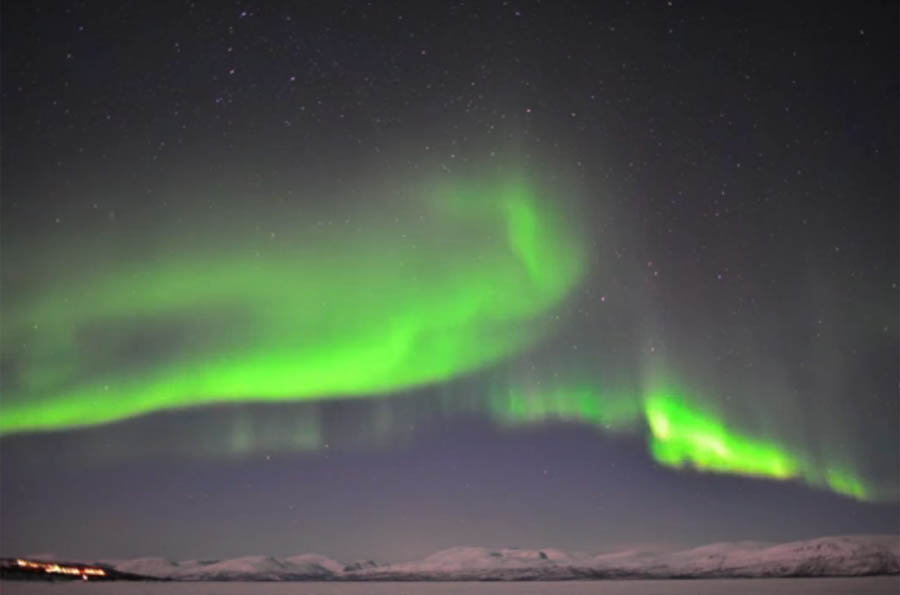Northern Lights Dance in Spectacular Time-Lapse Videos

Jaw-dropping displays of the northern lights can be seen in a stunning series of time-lapse videos captured in Sweden this month by astrophotographer Chad Blakley.
Blakley has been filming in Sweden's Abisko National Park, which offers a view of glowing aurora borealis over snowy mountains. Swooshing and swirling green northern lights can be seen glimmering in a deep purple sky in the videos, which were shot over a 13-day stretch.
"We have seen powerful auroras in the sky above Abisko for 13 nights in a row and it looks like there are more to come!" said Blakley, who runs the site LightsOverLapland.com. "Last night I witnessed one of the finest aurora displays I have seen in many months."
Auroras are caused when charged particles from the sun are guided by Earth's magnetic field and slam into neutral particles in our planet's upper atmosphere. The magnetic field steers solar particles toward Earth's poles, so the northern and southern lights are best seen at high and low latitudes.
Whatever the name, the aurora displays this month have been unforgettable, Blakley said.
"February 2013 is turning out to be one of the best months for aurora watching I have ever seen!" he added.
Get the Space.com Newsletter
Breaking space news, the latest updates on rocket launches, skywatching events and more!
Experts predict more and more stunning aurora shows as the sun ramps up toward a period of maximum activity this year, the peak of its 11-year cycle.
Follow Clara Moskowitz on Twitter @ClaraMoskowitz or SPACE.com @Spacedotcom. We're also on Facebook & Google+.
Join our Space Forums to keep talking space on the latest missions, night sky and more! And if you have a news tip, correction or comment, let us know at: community@space.com.

Clara Moskowitz is a science and space writer who joined the Space.com team in 2008 and served as Assistant Managing Editor from 2011 to 2013. Clara has a bachelor's degree in astronomy and physics from Wesleyan University, and a graduate certificate in science writing from the University of California, Santa Cruz. She covers everything from astronomy to human spaceflight and once aced a NASTAR suborbital spaceflight training program for space missions. Clara is currently Associate Editor of Scientific American. To see her latest project is, follow Clara on Twitter.









